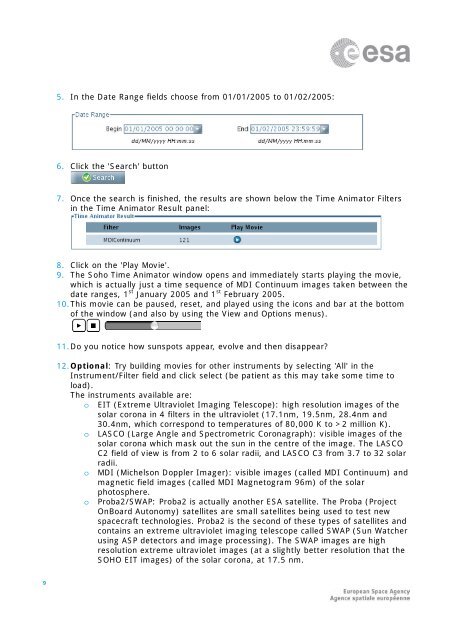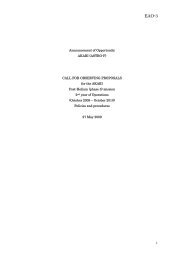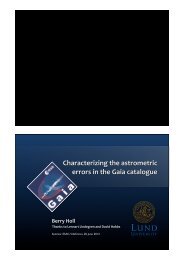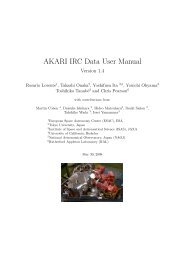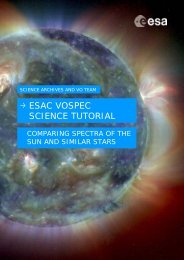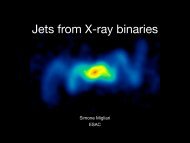You also want an ePaper? Increase the reach of your titles
YUMPU automatically turns print PDFs into web optimized ePapers that Google loves.
5. In the Date Range fields choose from 01/01/2005 to 01/02/2005:6. Click the 'Search' button7. Once the search is finished, the results are shown below the Time Animator Filtersin the Time Animator Result panel:8. Click on the 'Play Movie'.9. The Soho Time Animator window opens and immediately starts playing the movie,which is actually just a time sequence of MDI Continuum images taken between thedate ranges, 1 st January 2005 and 1 st February 2005.10. This movie can be paused, reset, and played using the icons and bar at the bottomof the window (and also by using the View and Options menus).11. Do you notice how sunspots appear, evolve and then disappear?12. Optional: Try building movies for other instruments by selecting 'All' in theInstrument/Filter field and click select (be patient as this may take some time toload).The instruments available are:o EIT (Extreme Ultraviolet Imaging Telescope): high resolution images of thesolar corona in 4 filters in the ultraviolet (17.1nm, 19.5nm, 28.4nm and30.4nm, which correspond to temperatures of 80,000 K to >2 million K).o LASCO (Large Angle and Spectrometric Coronagraph): visible images of thesolar corona which mask out the sun in the centre of the image. The LASCOC2 field of view is from 2 to 6 solar radii, and LASCO C3 from 3.7 to 32 solarradii.o MDI (Michelson Doppler Imager): visible images (called MDI Continuum) andmagnetic field images (called MDI Magnetogram 96m) of the solarphotosphere.o Proba2/SWAP: Proba2 is actually another ESA satellite. The Proba (ProjectOnBoard Autonomy) satellites are small satellites being used to test newspacecraft technologies. Proba2 is the second of these types of satellites andcontains an extreme ultraviolet imaging telescope called SWAP (Sun Watcherusing ASP detectors and image processing). The SWAP images are highresolution extreme ultraviolet images (at a slightly better resolution that the<strong>SOHO</strong> EIT images) of the solar corona, at 17.5 nm.9


